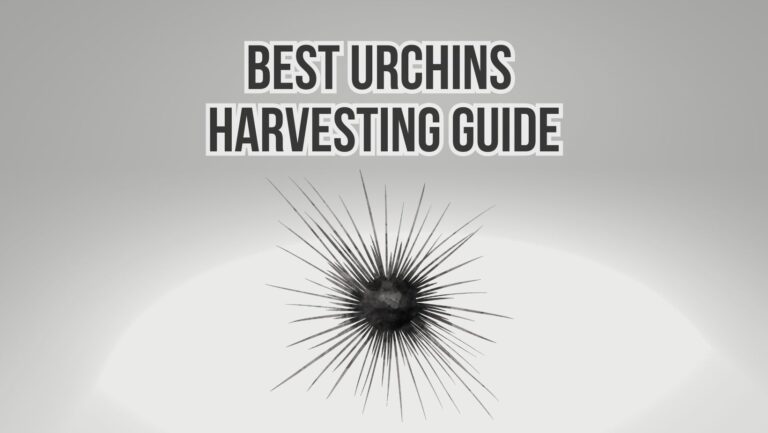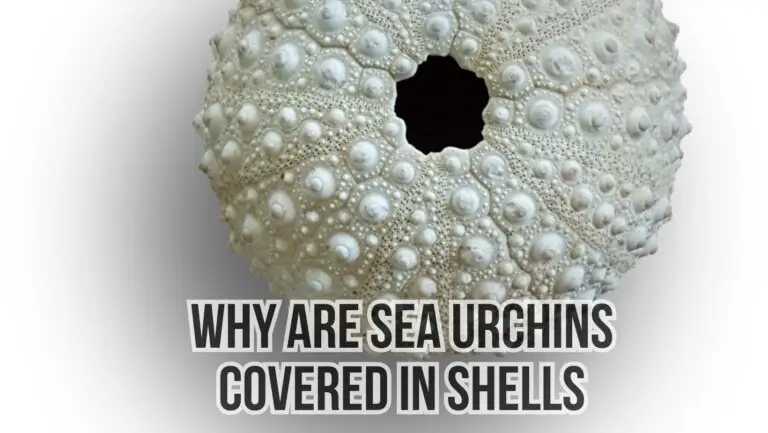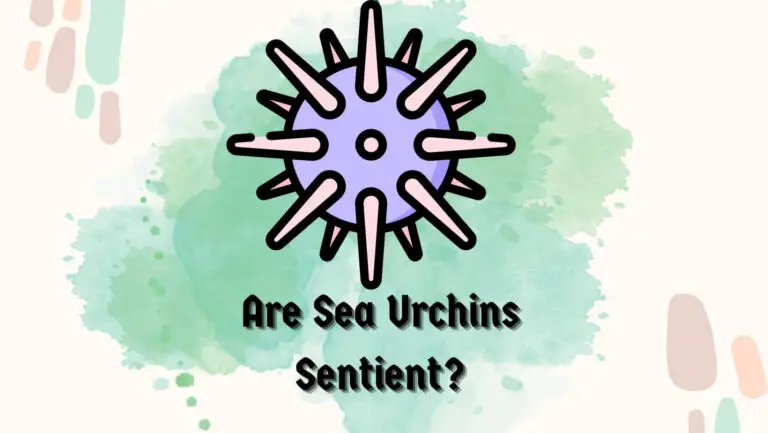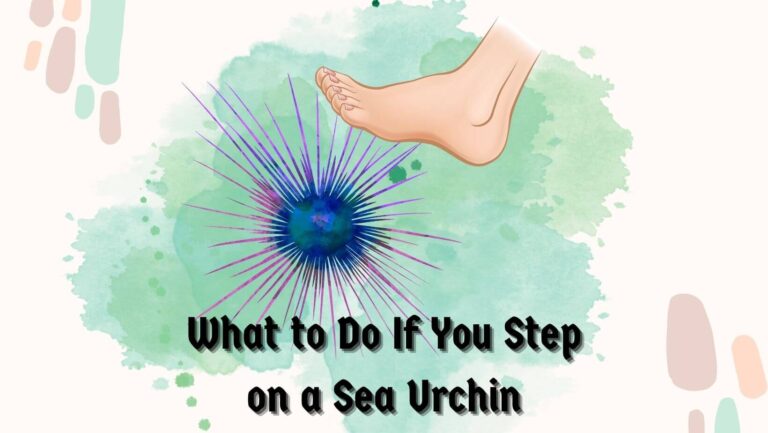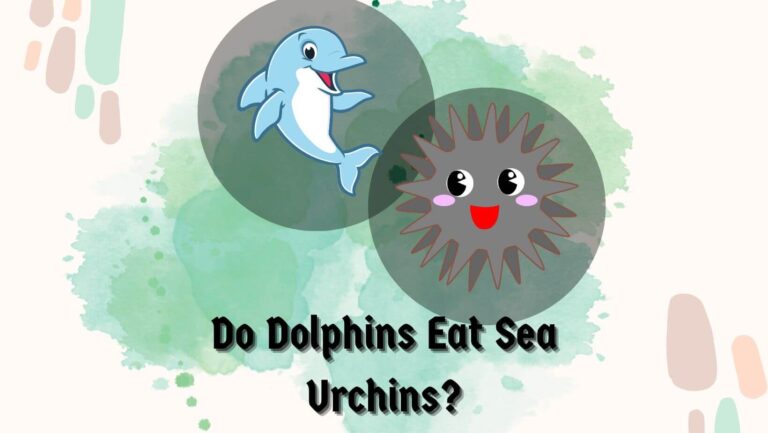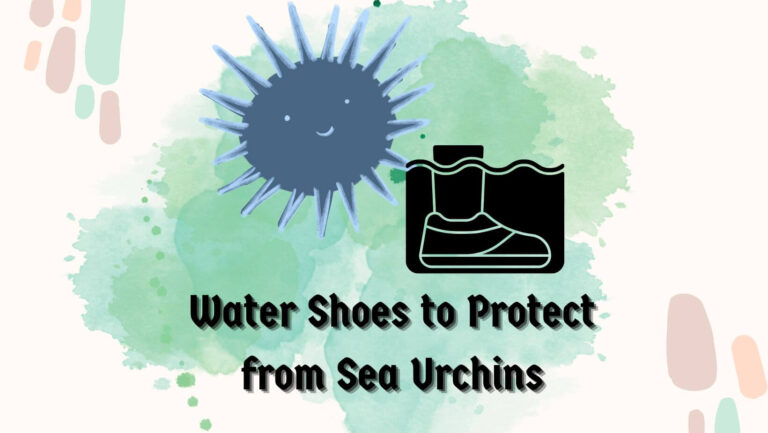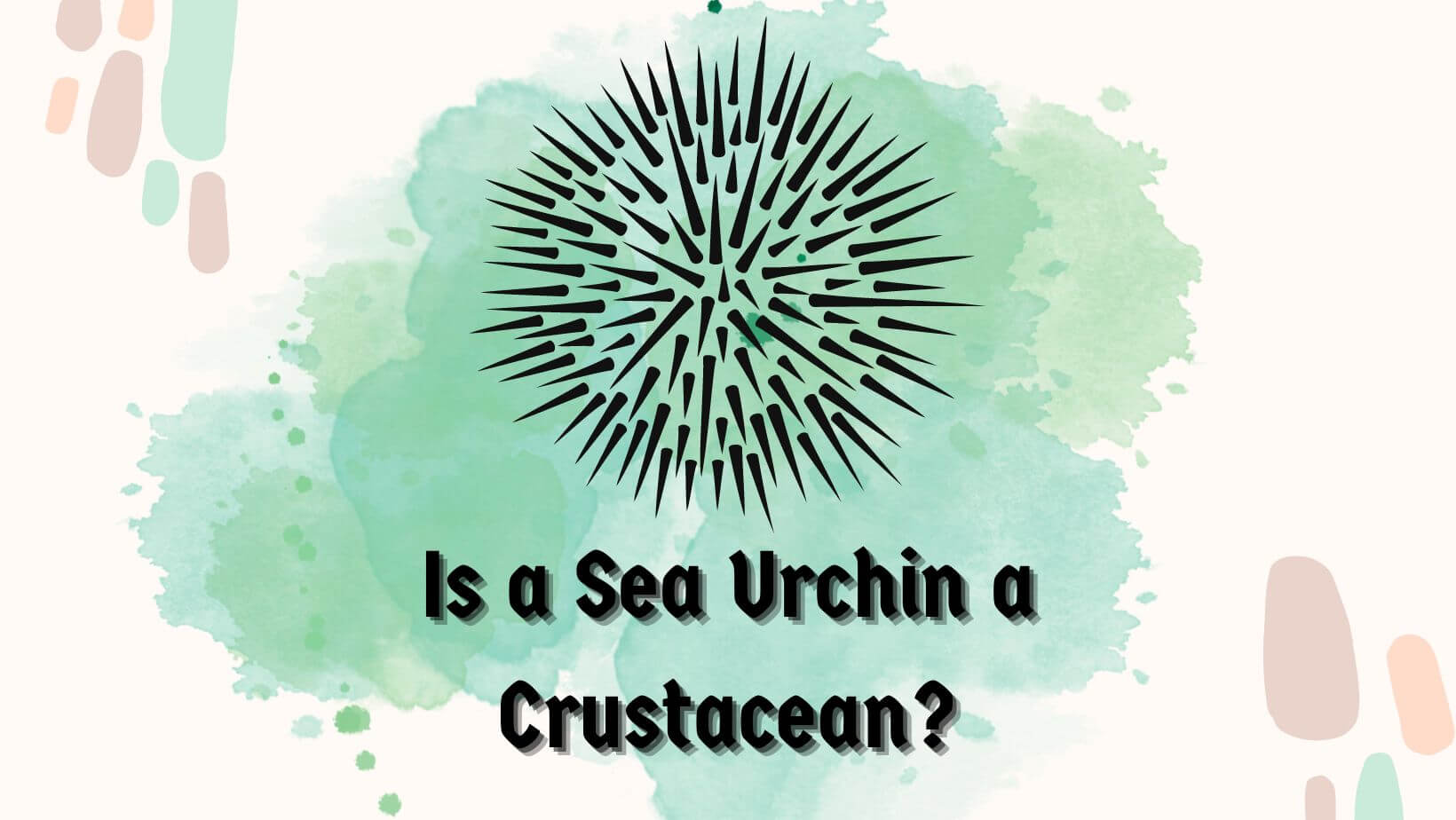
Suppose you want to understand and classify any particular organism. In that case, you will have to look into its taxonomy because it provides a systematic framework to categorize as well as organized living beings on their evolutionary and characteristics relationship.
Therefore, in this article, I will answer a fascinating question that has captivated many people’s minds: is a sea urchin a crustacean?
Here, we will be delivering into the fascinating world of sea urchins and crustaceans while examining their taxonomic classification and highlighting the differences & similarities. But first, let me tell you the answer to this question l: is a sea urchin a crustacean?
Table of Contents
Is a Sea Urchin a Crustacean?

No, a sea urchin is not a crustacean. Sea urchins belong to a different taxonomic group called echinoderms. Crustaceans, on the other hand, belong to a separate group called arthropods.
While echinoderms and arthropods are part of the larger animal kingdom, they have distinct characteristics and evolutionary histories.
When you look at sea urchins, you will notice many spikes and spines covering their spherical bodies, which characterize them.
The hard exoskeleton of a sea urchin is usually called a test, and it is particularly part of the class Echinoidea within the phylum Echinodermata.
On the other hand, crustaceans are a diverse group of arthropods that include many types of animals, like crabs, lobsters, shrimps, and barnacles. Examples of echinoderms include starfish, sea cucumbers, and sand dollars, making them close relative to sea urchins due to their characteristics.
Even though sea urchins and crustaceans share some similarities in their Marine habitat, they completely belong to the two distinct groups with different characteristics and evolutionary lineages.
Understanding Taxonomy
As you know, taxonomy is the science of classifying organisms, and it helps scientists to group organisms based on shared evolutionary relationships and characteristics. Let’s look at the sea urchins’ overview and classification along with the crustacean.
It is usually a Linnaean classification system that was first developed by Carl Linnaeus and is now widely used to categorize living organisms into a structure. Read my recent article on “What’s Inside a Sea Urchin?” to gin more insights.
Sea Urchins: Overview & Classification
When you look at sea urchins, you will notice them exhibiting radial symmetry, which means their body parts are arranged around a central axis. These intriguing Marine creatures belong to the species Echinodermata group because they pose unique characteristics that set them apart from crustaceans.
Their radial symmetry helps sea urchins move and feed effectively in their oceanic habitats. Apart from this also tends to have a hard spiny exoskeleton that protects from predators as well.
You should know that sea urchins are usually classified under Echinoidea, which includes two subclasses: Regularia and Irregularia.
Regular tends to have more symmetrical body shapes than irregular ones, with more varied and symmetrical forms. Surprisingly, there are various families, genera, and species of sea urchins within the subclasses with their distinct characteristics and adaptations.
Crustaceans: Overview & Classification
On the other hand, Crustaceans are a diverse group of arthropods commonly found in various aquatic environments. They belong to the phylum arthropods and subphylum crustaceans.
You should also note that crustaceans have a unique exoskeleton on their body, usually made of chitin, tough and flexible substances. They not only have jointed expenditures, but their bodies are also segmented, allowing them to make a wide range of movements and locomotion.
You should also note that the class Crustacea encompasses several subclasses, including Branchiopoda, Maxillopoda, and others.
Exaxh of the subclasses also compromises many families, genres, and species of crustaceans, showcasing their incredible distant diversity & adaptability to different ecological niches.
After knowing so many things about sea urchins and crustacean classification and taxonomy, let’s take a quick look at the difference between them.
5 Differences Between Sea Urchins and Crustaceans

Morphological differences
You should note that the sea urchins and the cry stations exhibit distinct morphological differences contributing to their classification into separate taxonomic groups.
As I told you earlier, sea urchins usually pose a spherical or flattened body structure with radial symmetry, whereas crustaceans tend to have more segmented body structures with bilateral symmetry.
These differences reflect their distinct evolutionary paths and adaptations to different habitats and lifestyles.
Appendages & locomotion mechanism.
You should also note that the locomotion and appendages mechanism also sets both species apart. Sea urchins tend to use their tube feet, which are small structures equipped with a suction cup for both movements and feeding.
On the other hand, crustaceans are known to use specialized appendages like claws, legs, or swimmerets that serve different purposes like locomotion, capturing prey, and filtering food particles.
Exoskeleton
Not only this, but the exoskeleton of both species is also quite different. Sea urchins possess a hard exoskeleton, usually composed of calcium carbonate plates, whereas crustacean exoskeletons are made from chitin.
This variation also set both species quite apart in terms of exoskeleton composition, contributing to each group’s distinct appearance and protective capabilities.
Feeding Habit And Diet
Talking about their feeding habitat and diet also plays a role in distinguishing sea urchins from crustaceans. You should note that sea urchins are generally herbivorous; some species are omnivorous and prefer grazing on algae and other organic plant matter.
Crustaceans, on the other hand, however, display a wide range of diets, including some being carnivorous, herbivorous, or even filter feeders, depending on their species as well as ecological niche.
Reproduction & Life Cycle.
Lastly, reproduction & life cycle makes them different from one another. You should know that sea urchins employ different reproductive strategies, including external fertilization and the release of gametes into the water.
On the other hand, crustaceans tend to exhibit diverse reproductive methods like internal fertilization and a wide array of larval forms.
All these differences in reproductive strategies also contribute to the unique life cycle of sea urchins and crustaceans, making them two distinct species different from one another.
Similarities Between Sea Urchins & Crustaceans
Even though there are many differences between sea urchins and crustaceans, you can also find some notable similarities. However, these similarities can be attributed to their common evolutionary origin or ecological roles.
You should know that sea urchins and crustaceans are both marine organisms that have adapted to various aquatic environments. Additionally, sea urchins and some crustaceans like lobsters and certain crabs tend to develop a similar exoskeleton, providing the ultimate protection against predators.
Both groups also play an important ecological role in the respective ecosystem. You should know that sea urchins help maintain the balance of marine ecosystems by controlling the population of algae growth. In contrast, crustaceans are known to contribute to nutrient cycling and serve as a crucial food source for many other organisms.
Also Read & Learn Valuable Insights
Conclusion
In conclusion, sea urchins and crustaceans are two distant groups of marine organisms that belong to different classifications & taxonomies. As told, there are many differences between them, including morphological differences, exoskeleton compositions, feeding habits, diet, and reproductive strategies that set them apart.
However, there are also a few similarities between them in terms of ecological roles and certain characteristics. Therefore, it is important that you understand this taxonomy to avoid misconceptions and know about the intricate relationships and diversity of life on Earth.
Scientists usually gain valuable insight into the natural world and its interconnectedness by studying the taxonomy of sea urchins, crustaceans, and other organisms. I hope I have given you all the information you need to know: is a sea urchin a crustacean?
If you find the article helpful, then consider sharing it. Your share is going to hell. Many people learn about the two distinct groups of marine organisms and what sets them apart. Also, check out our other helpful guide about these fascinating creatures: Sea Urchins. See you in the next post till then, take care and goodbye.

